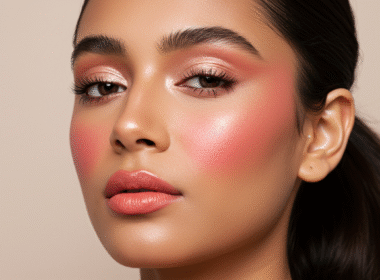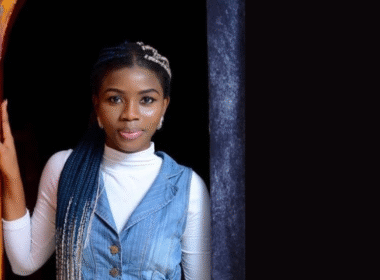African hair comes in diverse textures, ranging from tightly coiled curls to softer, wavier ones. However, one common feature among these textures is the dryness and fragility due to low oil production in the scalp. This makes the typical African hair susceptible to breakage, tangles, and damage. Fortunately, African protective hairstyles have been saving the day since time immemorial.
How African Hairstyles Promote Healthy Hair Growth
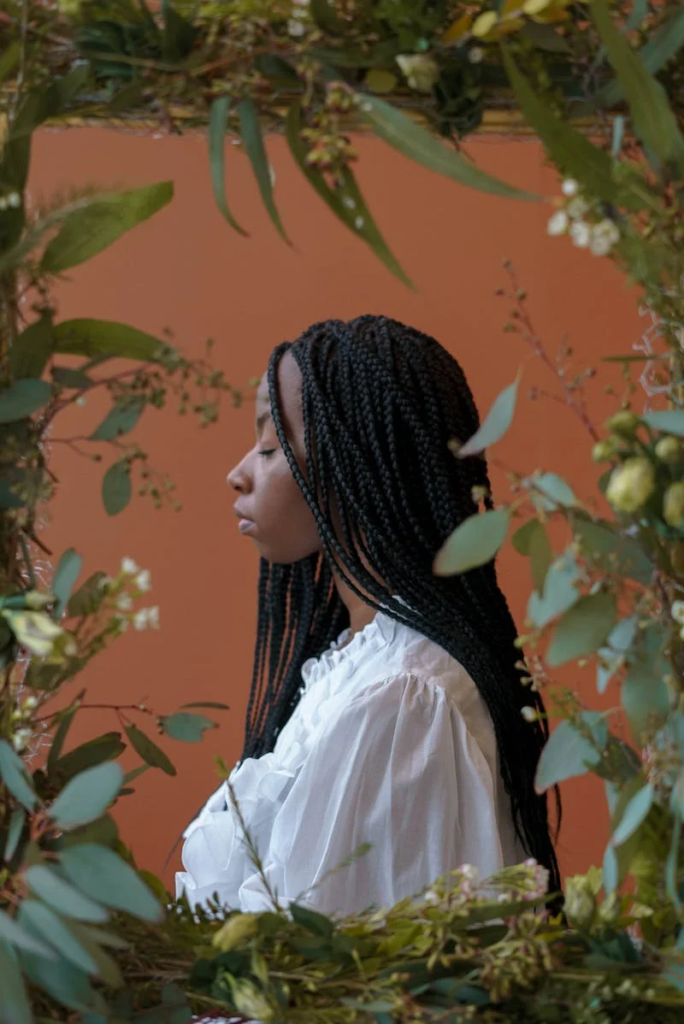
If you have ever searched for how to promote healthy hair growth, you sure have come across the vital role protective hairstyles have to play in this. But did you know a good number of these protective hairstyles originated in Africa? No? No judgment. This article explores some of the best African protective hairstyles and how they can promote hair growth.
Top African Protective Hairstyles
Here are some of the most popular types of African protective hairstyles:
Cornrows

Cornrows are one of the most recognisable African protective hairstyles, as they have been worn for centuries in Africa. They are usually tightly woven close to the scalp. Their versatility has to be my favourite thing about them. They can be worn in many different styles, from straight lines to more complex patterns, from tiny braids to huge ones.
Senegalese Twists
Senegalese twists are a popular protective hairstyle that originated in Senegal, West Africa. These twists are created by twisting two strands of hair together from the root to the tip. Senegalese twists can be done with synthetic or natural hair extensions, and they come in various lengths and thicknesses, depending on your preference.
Fulani Braids
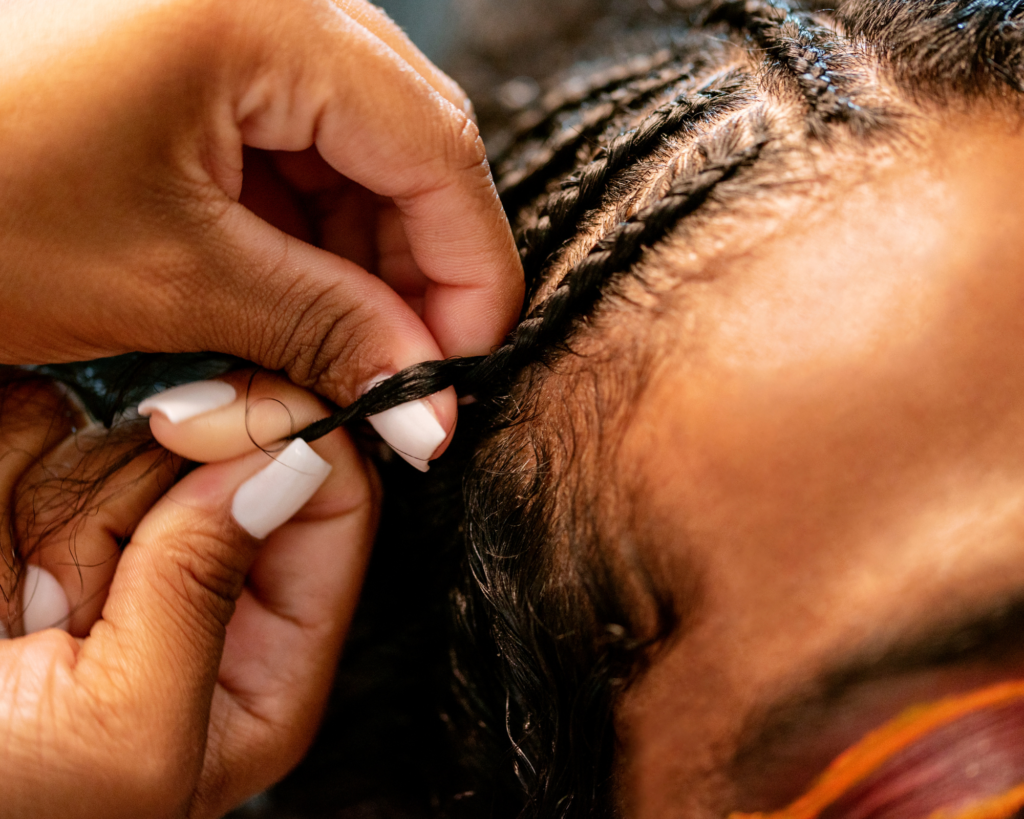
Fulani braids are common in the Northern part of Nigeria. Typically, these braids feature a single cornrow down the centre of the head with smaller braids on each side. Fulani braids are often adorned with beads, cowrie shells, or other decorative elements, making them a striking African cultural hairstyle.
Bantu Knots
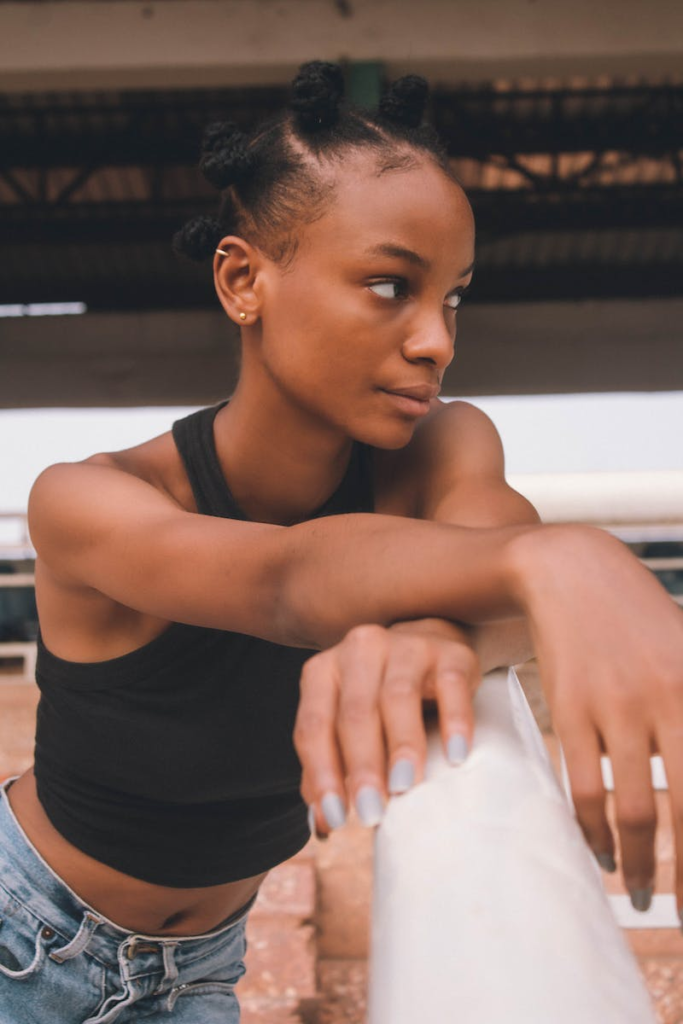
This hairstyle is named after the Bantu people of Africa, who have a rich history of hairstyling. Bantu knots are small, coiled buns created by twisting sections of hair into knots. These knots can be loosened and the curls worn out like that. The hairstyle can also be made with your natural hair or artificial extensions and decorated with beads or cowrie shells.
Ghana Weaving
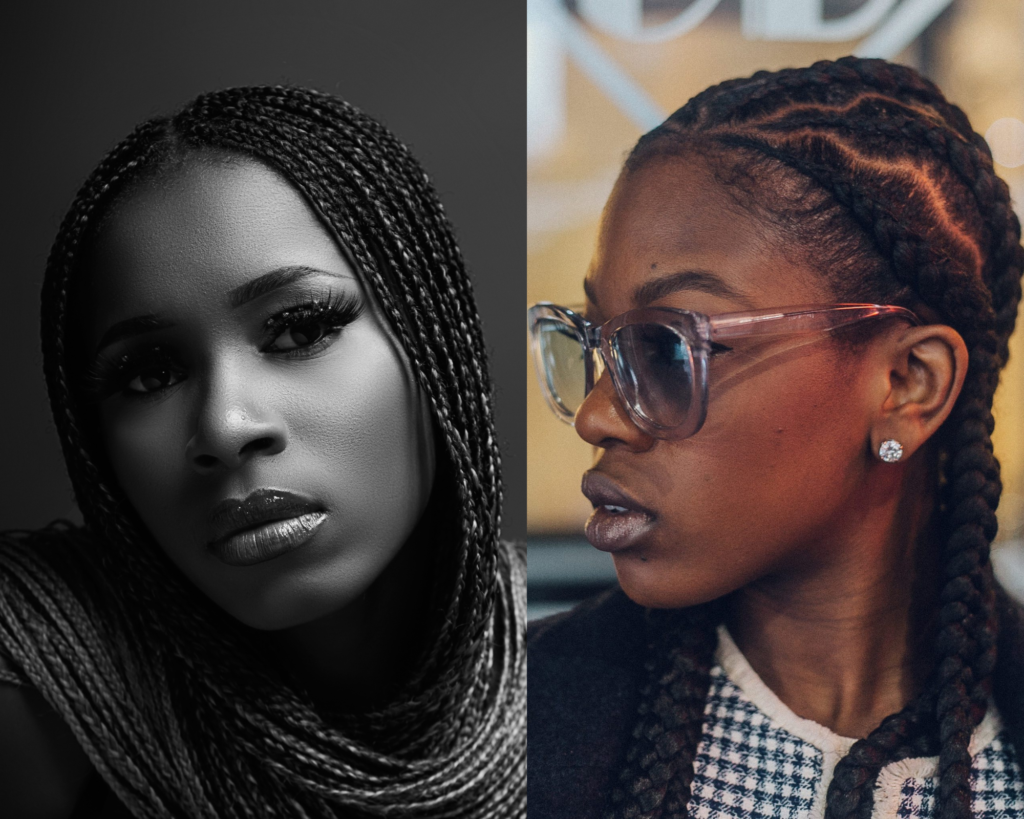
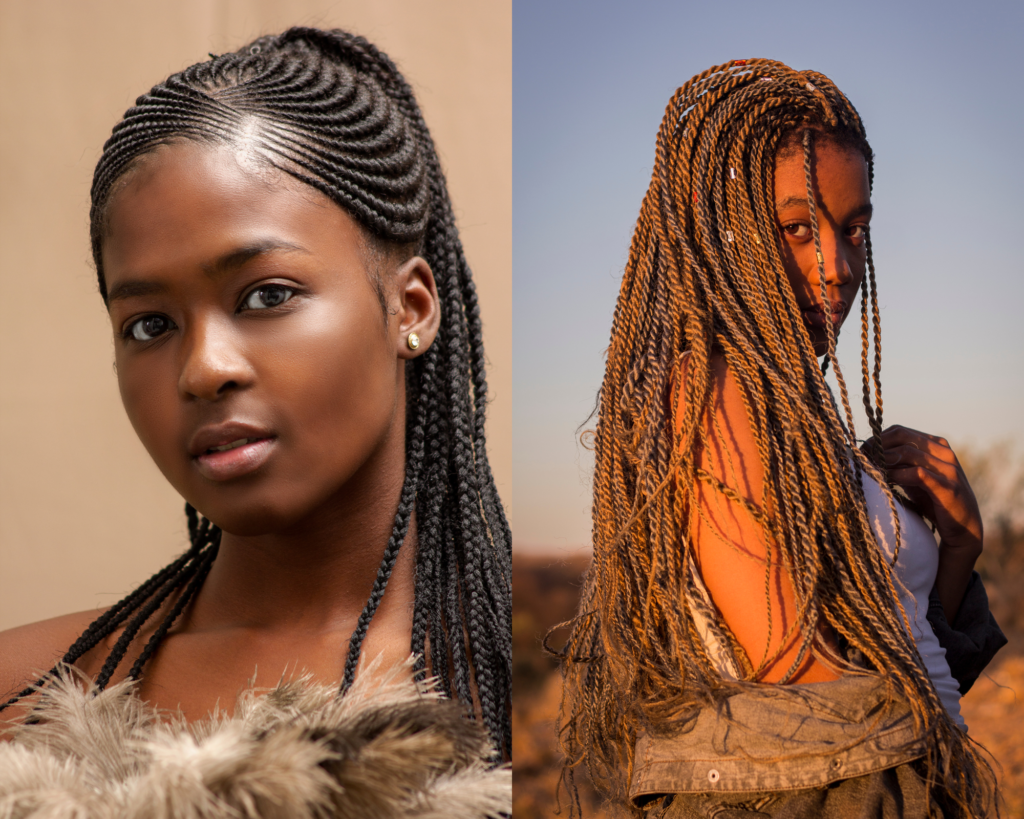
Ghana weaving, also known as banana braids, is a type of cornrow hairstyle with roots in Ghana, West Africa. The braids are often done in thick, diagonal rows. Apart from Ghana braids being stylish, they are perfect for protecting the ends of your hair to prevent split ends and breakage.
How Do African Hairstyles Promote Hair Growth?
If you are wondering why you should try out African protective hairstyles, the overall reason is that they promote hair growth. Here’s how;
Protection
One of the ways African hairstyles promote healthy hair is by protecting the hair, of course. The hair is tucked away, reducing exposure to harsh weather conditions, pollutants, and the abrasive friction of everyday life. This protection prevents moisture loss and minimises breakage, ultimately fostering hair health. Cornrows, for instance, distribute the tension evenly along the scalp, reducing stress on individual hair strands. This helps maintain the hair’s strength and elasticity, ensuring length retention.
Scalp Health
Healthy hair begins with a healthy scalp, and African hairstyles prioritise scalp care like no other. Making these hairstyles usually involves meticulous attention to the scalp, using natural oils and nourishing treatments such as shea butter and coconut oil during the styling process. These treatments replenish moisture and soothe the scalp, creating the perfect environment for hair growth and overall health.
Low Manipulation
Like a lot of other things, with hair, less is often more. African hairstyles are known for their low-manipulation approach. Once styled, these hairdos can be worn for weeks or even months without requiring constant combing or heat styling. This reduces the risk of breakage and split ends, as well as the exposure to damaging styling tools and products. Take a look at other ways to prevent split ends.
Versatility and Diversity
African hairstyles allow you to experiment with different looks without compromising hair health. These protective hairstyles allow for wigs, weaves, and other extensions, giving you the room to change your appearance without subjecting your natural hair to excessive styling or chemical treatments.
Also, African protective hairstyles embrace various textures, colours, and lengths, catering to the individuality and specialty of each person’s hair.
Conclusion
African hairstyles reveal culture, diversity, and the beauty of African hair. Beyond their stunning aesthetics, these hairstyles are perfect for promoting hair health. They protect, and nourish the hair, promoting strength, retaining length, and ensuring vibrancy. So, the next time you admire a pretty African hairstyle, remember that it has a lot more value than its visual appeal.
Related:
Creating a Healthy Home for a Healthy Mind
Femi Olayebi Driving the Nigerian Leather Industry Forward with Lagos Leather Fair
